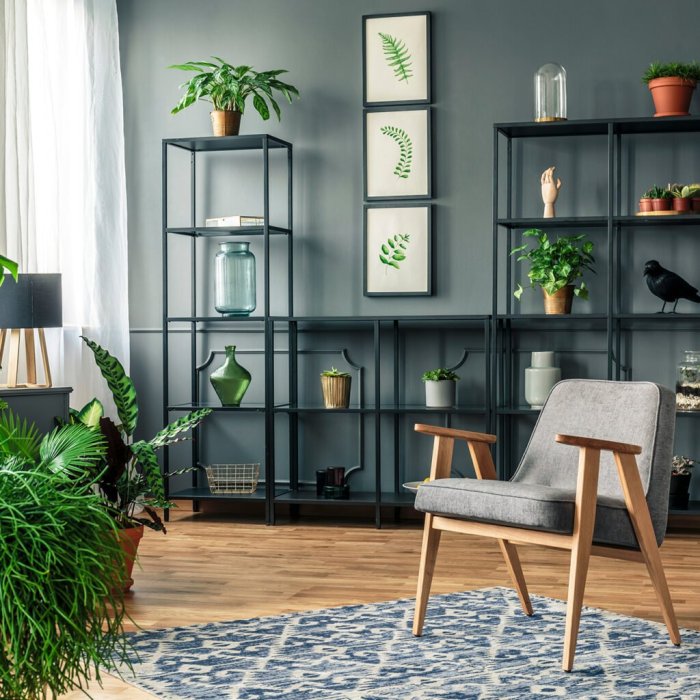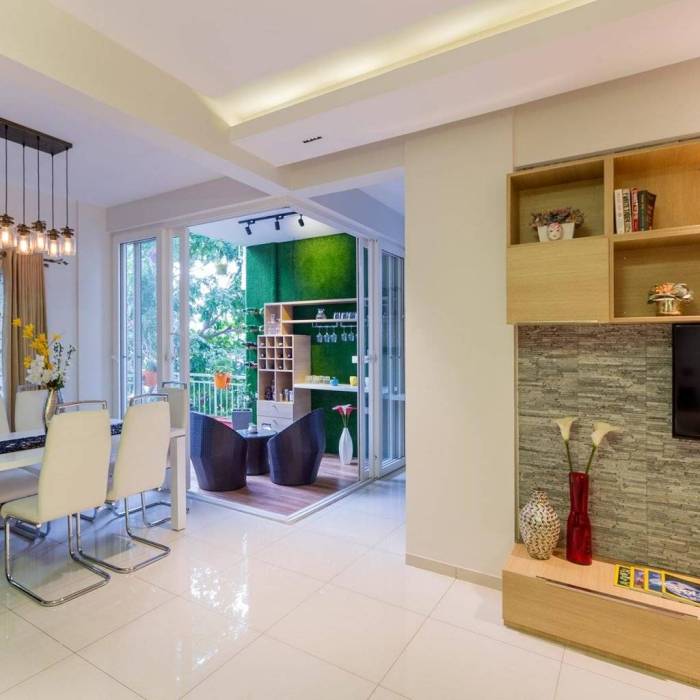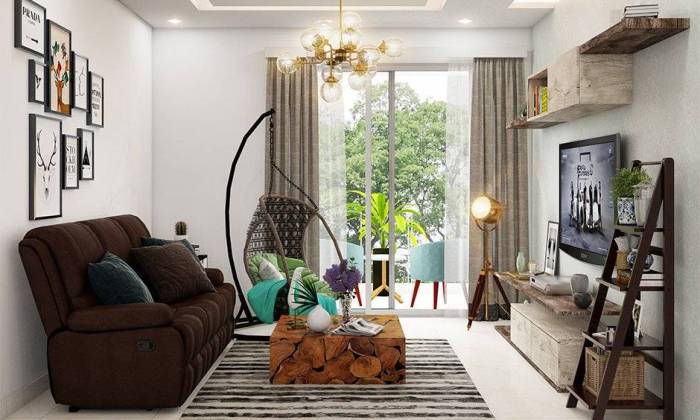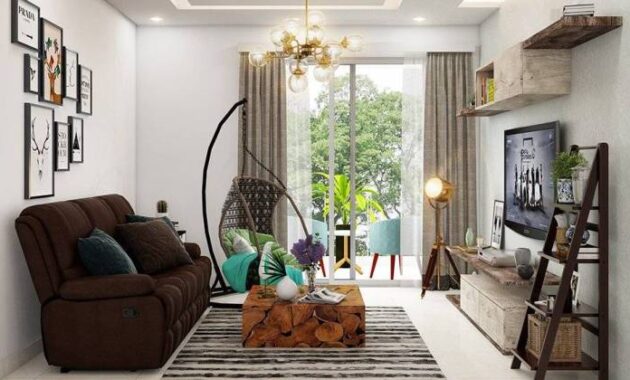Budget house interior design is the art of transforming a home into a stylish and inviting space without breaking the bank. It’s about embracing creativity, utilizing smart design strategies, and making informed choices to achieve a beautiful and functional living environment.
From maximizing space and functionality to choosing budget-friendly materials, this guide explores a range of techniques and ideas to help you create a home that reflects your personal style while staying within your budget. Whether you’re working with a small space or tackling a larger project, you’ll discover practical tips and inspiring examples that empower you to design a home you love.
Understanding Budget Constraints

Budgeting is crucial for any home interior design project, especially when working with limited resources. It ensures a successful and enjoyable experience while preventing financial strain.
Budgeting for a home interior design project is a critical step in ensuring a successful and enjoyable experience. It allows homeowners to prioritize their needs and preferences while staying within their financial means. By carefully planning and allocating resources, homeowners can avoid unnecessary expenses and ensure that their vision for their home is realized within their budget.
Typical Budget Ranges
Budget-conscious homeowners often face financial limitations, making it essential to understand typical budget ranges for interior design projects. These ranges can vary significantly depending on factors such as the size of the home, the scope of the project, and the desired level of customization.
Budget-conscious homeowners often face financial limitations, making it essential to understand typical budget ranges for interior design projects. These ranges can vary significantly depending on factors such as the size of the home, the scope of the project, and the desired level of customization.
- Small-scale projects:These projects typically involve refreshing a single room, such as a living room or bedroom, and might range from $1,000 to $5,000.
- Mid-range projects:These projects involve multiple rooms or a larger area, such as an entire floor, and can range from $5,000 to $20,000.
- Large-scale projects:These projects involve a complete overhaul of the entire house, including structural changes, and can exceed $20,000.
Common Financial Limitations
Homeowners often face financial limitations when undertaking interior design projects. These limitations can stem from various factors, including:
Homeowners often face financial limitations when undertaking interior design projects. These limitations can stem from various factors, including:
- Limited disposable income:Many homeowners have limited disposable income after covering essential expenses, such as mortgage payments, utilities, and groceries.
- Prior financial commitments:Homeowners may have existing financial commitments, such as student loans, car payments, or credit card debt, that limit their spending on home improvement projects.
- Unexpected expenses:Life can throw unexpected expenses, such as medical bills or car repairs, that can disrupt a planned home renovation budget.
Setting a Realistic Budget, Budget house interior design
Setting a realistic budget is crucial for a successful interior design project. This involves:
Setting a realistic budget is crucial for a successful interior design project. This involves:
- Defining project scope:Clearly define the scope of the project, including the rooms to be renovated, the desired level of customization, and the specific design elements to be incorporated.
- Prioritizing needs and wants:Differentiate between essential needs and desired wants, focusing on the most important aspects of the project that will provide the greatest impact.
- Researching costs:Conduct thorough research on the costs of materials, labor, and services required for the project, considering factors such as local market prices and current trends.
- Creating a detailed budget:Develop a detailed budget breakdown that includes all anticipated expenses, such as materials, labor, permits, and contingency funds.
Sticking to the Budget
Sticking to the budget requires discipline and careful planning. This involves:
Sticking to the budget requires discipline and careful planning. This involves:
- Tracking expenses:Keep meticulous records of all expenses incurred during the project, ensuring that they align with the allocated budget.
- Negotiating prices:Explore opportunities to negotiate prices with suppliers and contractors, leveraging factors such as bulk purchases or competitive bids.
- Making adjustments:Be prepared to make adjustments to the project scope or design elements if necessary to stay within the budget, prioritizing the most essential aspects.
- Avoiding impulse purchases:Resist the temptation to make impulsive purchases that can quickly derail the budget, focusing on planned and necessary items.
Furniture and Decor on a Budget
Furnishing and decorating your home can be a significant expense, but it doesn’t have to break the bank. There are many ways to achieve a stylish and comfortable space without sacrificing your budget. This section will explore various strategies for finding affordable furniture and decor items, as well as DIY projects that can add a personal touch to your home.
Budget house interior design is all about maximizing space and style on a limited budget. A great example is a 750 sq ft house interior design , where smart design choices can make the space feel larger and more luxurious.
With clever furniture arrangements, color palettes, and storage solutions, you can achieve a beautiful and functional home without breaking the bank.
Sources for Affordable Furniture and Decor
Finding affordable furniture and decor can be a challenge, but there are many options available. Here are some sources for budget-friendly pieces:
- Thrift Stores and Consignment Shops:These are excellent places to find unique and affordable furniture, home decor, and accessories. You can often find gently used pieces at a fraction of the price of new items.
- Online Marketplaces:Websites like Craigslist, Facebook Marketplace, and eBay offer a wide selection of furniture and decor at various price points. Be sure to carefully inspect items before purchasing and consider the cost of transportation.
- Discount Furniture Stores:Retailers like IKEA, Wayfair, and Overstock offer affordable furniture and decor options in various styles. They often have sales and promotions, so it’s worth checking their websites or visiting their stores regularly.
- Secondhand Stores:Many secondhand stores specialize in furniture and home decor, offering a curated selection of quality pieces at reasonable prices.
DIY Projects for Adding Personality and Style
DIY projects are a fantastic way to add personality and style to your home without spending a lot of money. Here are some ideas:
- Painting Furniture:A fresh coat of paint can completely transform the look of an old piece of furniture. You can choose a bold color to make a statement or opt for a neutral shade to create a more subtle update.
- Upcycling:Transform old or discarded items into new and useful pieces. For example, you can turn old pallets into a coffee table, repurpose wine bottles as vases, or create a unique wall art piece from old magazines.
- Creating Wall Art:DIY wall art is a great way to add personality and interest to your space. You can create your own artwork, print photos, or use fabric scraps to create a unique tapestry.
- Sewing and Crafting:If you enjoy sewing or crafting, you can create your own throw pillows, curtains, or tablecloths. This is a great way to personalize your home and add a touch of handmade charm.
Mood Board of Budget-Friendly Furniture and Decor
Imagine a mood board with the following elements:
- A vintage armchair found at a thrift store, reupholstered in a vibrant floral fabric.
- A simple wooden coffee table with a glass top, purchased from a discount furniture store.
- A collection of framed prints from a local art fair, displayed on a gallery wall.
- DIY throw pillows made from fabric scraps and vintage buttons.
- A repurposed vintage suitcase used as a side table, adorned with a few plants.
Incorporating Personal Style
Your home should reflect your personality and taste, and you don’t need a hefty budget to achieve this. Incorporating your personal style into your interior design is about making your space feel uniquely yours, adding character and warmth, and making it a place you truly love.
Creating a Cohesive Look on a Budget
A cohesive look doesn’t have to be expensive. It’s about creating a sense of unity and flow throughout your space, even with budget-friendly pieces. Here are some tips:
- Choose a Color Palette:A limited color palette helps create a cohesive look. Select 2-3 main colors and use them throughout your space. This can be applied to walls, furniture, accessories, and even artwork.
- Repeat Elements:Repeating design elements, like patterns, textures, or shapes, creates a sense of continuity. This can be done with throw pillows, rugs, or even artwork.
- Use a Focal Point:A focal point draws the eye and adds visual interest. It could be a statement piece of furniture, a large piece of artwork, or even a unique architectural feature.
Affordable Ways to Express Personal Style
Here are some affordable ways to express your personal style through interior design:
- Thrifted Finds:Thrift stores and antique shops are treasure troves for unique and affordable furniture and décor. You can often find one-of-a-kind pieces that add character to your space.
- DIY Projects:DIY projects are a great way to personalize your home on a budget. You can paint furniture, create artwork, or even build your own shelves.
- Personal Touches:Add personal touches with photos, travel souvenirs, or items that hold sentimental value. These items tell your story and make your home feel uniquely yours.
- Plants:Plants add life and color to any space. They are relatively inexpensive and can be found at most grocery stores and home improvement stores.
- Lighting:Lighting can dramatically affect the mood and feel of a space. Experiment with different types of lamps and fixtures to create the desired ambiance.
DIY and Upcycling Techniques

Adding a personal touch to your home decor doesn’t have to break the bank. DIY projects and upcycling old furniture can transform your space into a unique and stylish haven. These techniques not only save money but also allow you to express your creativity and make your home truly your own.
Simple DIY Project
A simple DIY project that enhances a room is creating a decorative accent wall. This technique can add visual interest and personality to a space without requiring extensive renovations.Here’s a step-by-step guide:
- Choose a wall: Select a wall that will serve as a focal point, such as the wall behind a sofa or a dining table.
- Prepare the wall: Ensure the wall is clean and free of any imperfections. If necessary, apply a primer to create a smooth surface.
- Choose your materials: There are many affordable materials you can use for an accent wall, such as wallpaper, paint, or even fabric.
- Wallpaper: Choose a pattern or texture that complements your existing decor.
- Paint: Experiment with different colors and finishes to create a unique look. Consider using a stencil to create a pattern.
- Fabric: Use fabric panels or upholstery fabric to create a textured and eye-catching accent wall. Secure the fabric with tacks or staples.
- Apply the materials: Follow the manufacturer’s instructions for applying your chosen material. Ensure even coverage and smooth transitions.
- Accessorize: Once the accent wall is complete, add accessories to enhance the design. Consider artwork, mirrors, or shelves to create a cohesive look.
Upcycling Furniture
Upcycling old furniture is a fantastic way to create unique pieces that add character and personality to your home. It involves transforming discarded or unwanted furniture into something new and stylish.Here’s how you can upcycle furniture:
- Find the right piece: Look for furniture with good bones, even if it’s in need of some TLC. This could be a vintage dresser, an old table, or even a chair.
- Clean and prepare the furniture: Remove any dirt, dust, or old finishes. Sand the surface to create a smooth base for your new look.
- Choose your transformation: Consider the style and purpose of the furniture. You can repaint it, decoupage it, or add new hardware.
- Repainting: Use a fresh coat of paint to give the furniture a new look. Consider using bold colors or adding a distressed finish.
- Decoupage: Apply decorative paper or fabric to the furniture using decoupage glue. This technique allows for endless creative possibilities.
- New hardware: Replace old knobs, handles, or hinges with new ones to give the furniture a modern or vintage touch.
- Apply the transformation: Follow the instructions for your chosen method. Ensure a smooth and even application for a professional finish.
- Accessorize: Add decorative touches to your upcycled furniture, such as plants, throws, or artwork.
Creating a Welcoming and Comfortable Atmosphere: Budget House Interior Design
A well-designed home should not only be visually appealing but also create a warm and inviting atmosphere. A comfortable and inviting atmosphere is essential for relaxation, rejuvenation, and overall well-being. A welcoming home encourages a sense of peace, security, and happiness.
It’s a place where you can unwind after a long day and connect with loved ones.
Maximizing Natural Light and Ventilation
Natural light is a powerful tool for creating a bright and airy atmosphere. It can also enhance the overall feel of a space, making it feel larger and more inviting. Proper ventilation is crucial for maintaining a healthy indoor environment.
Budget house interior design doesn’t have to be boring! You can achieve a stunning look with simple, strategic choices. For instance, a white interior can create a sense of spaciousness and light, as seen in this beautiful white house interior design example.
While white might seem basic, it’s incredibly versatile and can be used as a backdrop for bold accents and pops of color, ultimately enhancing the overall budget-friendly aesthetic.
Good ventilation helps to remove stale air, reduce humidity, and prevent the buildup of pollutants. Here are some tips for maximizing natural light and ventilation:
- Use light-colored paint on walls and ceilings to reflect natural light.
- Install large windows to allow maximum sunlight to enter the home.
- Use sheer curtains or blinds to allow light to filter in while still providing privacy.
- Ensure adequate ventilation by installing exhaust fans in kitchens and bathrooms.
- Open windows regularly to allow fresh air to circulate.
Designing a Cozy Bedroom
A cozy bedroom is a sanctuary where you can relax and unwind. Creating a comfortable and inviting atmosphere in your bedroom is essential for a good night’s sleep. You can achieve this by using a combination of textures, colors, and lighting.Here are some tips for designing a cozy bedroom:
- Use warm and inviting colors like soft blues, greens, and yellows.
- Incorporate soft textures such as plush rugs, cozy throws, and fluffy pillows.
- Use layered lighting to create a warm and inviting ambiance. Consider using a combination of overhead lighting, table lamps, and bedside lamps.
- Add personal touches such as framed photos, artwork, or plants to create a sense of warmth and personality.
- Use a comfortable bed with a high-quality mattress and bedding. This is the foundation of a cozy bedroom, and it’s worth investing in.
Inspiration and Resources

Finding inspiration for your budget-friendly interior design project is essential. It helps you visualize your dream space and discover creative solutions for achieving your desired look. Numerous resources are available to guide you, offering a wealth of ideas and practical tips.
Online Resources and Blogs
Several online resources and blogs dedicated to budget-friendly interior design offer valuable insights and inspiration.
Budget house interior design doesn’t have to mean sacrificing style. There are plenty of creative ways to achieve a beautiful and functional space without breaking the bank. For inspiration, you can check out the latest trends in best house interior design in India , where designers often showcase innovative solutions for budget-conscious homeowners.
By learning from these examples, you can adapt the ideas to your own home and create a stylish space that reflects your personal taste.
- Apartment Therapy:This popular website provides practical advice, DIY projects, and stylish home decor ideas for every budget. Their “Budget Decor” section features articles and tips for maximizing your spending power.
- The Spruce:This comprehensive resource offers detailed guides and tutorials on various home improvement topics, including budget-friendly interior design. Their “Budget Decorating” section provides specific tips and tricks for creating a stylish and functional space without breaking the bank.
- Remodelista:This website focuses on design inspiration, showcasing beautiful and functional homes with a focus on sustainable and timeless design. While not solely dedicated to budget-friendly design, Remodelista often features projects that demonstrate how to achieve a high-end look on a budget.
- Design Sponge:This website offers a mix of design inspiration, DIY projects, and lifestyle content. Their “Budget Decor” section features articles and tutorials for creating a stylish and personalized home on a limited budget.
Inspiring Examples of Budget-Friendly Homes
- A Scandinavian-inspired apartment in Copenhagen:This small apartment showcases the beauty of minimalism and functionality. The use of natural materials, light colors, and simple furniture creates a clean and airy atmosphere. The apartment’s layout maximizes space and utilizes built-in storage solutions to keep things organized.
- A colorful and eclectic home in Mexico City:This vibrant home embraces color and personality. The use of bold colors, patterned textiles, and vintage furniture creates a unique and welcoming space. The homeowner’s creativity and resourcefulness are evident in the repurposed furniture and DIY decor.
- A modern farmhouse in the countryside:This home blends rustic charm with contemporary elements. The use of reclaimed wood, natural textures, and simple furniture creates a warm and inviting atmosphere. The homeowner’s attention to detail is evident in the carefully curated decor and the use of plants to bring life to the space.
Affordable Furniture and Decor Retailers
| Retailer | Style | Price Range |
|---|---|---|
| IKEA | Modern, Scandinavian | Low to Mid-Range |
| Target | Contemporary, Traditional, Modern Farmhouse | Low to Mid-Range |
| Wayfair | Wide Variety | Low to High-Range |
| Overstock | Wide Variety | Low to High-Range |
| World Market | Global, Eclectic | Mid-Range to High-Range |
Last Word
Budget house interior design proves that style and affordability can go hand in hand. By embracing resourceful approaches, exploring DIY techniques, and making conscious choices about materials and decor, you can create a home that is both stylish and functional without sacrificing your budget.
Remember, it’s not about sacrificing quality but rather making smart choices that align with your vision and financial constraints.
Essential FAQs
What are some common budget-friendly paint colors?
Light and neutral colors like white, beige, gray, and pale blues can make a space feel larger and brighter. They also provide a versatile backdrop for showcasing furniture and decor.
Where can I find affordable furniture and home decor?
Thrift stores, online marketplaces like Craigslist and Facebook Marketplace, and discount retailers often offer great deals on furniture and decor. You can also find unique and budget-friendly pieces at flea markets and antique shops.
How can I add personality to a room on a budget?
Incorporate personal touches through artwork, plants, throw pillows, and decorative accents. You can also use DIY projects to create unique and personalized pieces.

